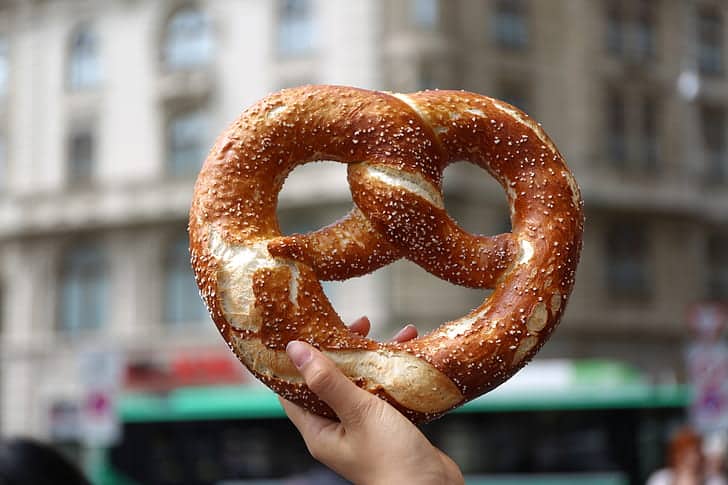Pretzels are a twisted treat with roots that stretch back through centuries and continents. The first iteration of this iconic doughy delight emerged in the streets of 6th-century Europe.
The story begins with a monk in southern France during the early Middle Ages. In a quiet monastery kitchen, an ingenious baker, seeking a way to represent the Holy Trinity, shaped a simple mixture of flour, water and salt into a distinctive form…
The result was the pretzel – a twisted knot that became symbolic of spiritual devotion. This humble beginning marked the birth of a snack that would eventually transcend its religious origins.
Fast forward to medieval Germany, where the pretzel found its way into the hearts and stomachs of both the pious and everyday folk. Its popularity soared, and by the 12th century, pretzel vendors were a common sight on the bustling streets of cities like Vienna. As pretzels became a symbol of good luck and prosperity, they found a place in wedding ceremonies, with couples breaking a pretzel as a gesture of unity.
The pretzel journeyed across the Atlantic Ocean in the 18th century, carried by German immigrants to the United States. It landed on the streets of Pennsylvania, where it underwent further transformations, becoming a beloved snack at carnivals and fairs in various forms – soft, hard, or as bite-sized twists.
The pretzel’s influence reached beyond Europe and North America. In Eastern Europe pretzels became a popular street food, often served warm and dusted with coarse salt. In these regions, pretzels retained their simple yet irresistible charm, proving that the allure of a well-baked dough ring knows no borders.
In the 21st century, pretzels have evolved into a versatile canvas for culinary experimentation. In contemporary bakeries artisanal pretzels come adorned with an array of toppings – from sesame seeds and poppy seeds to caramel and chocolate. The pretzel, once a humble knot, has become a gastronomic delight, celebrating the art of dough-twisting creativity.







Click here to change your cookie preferences